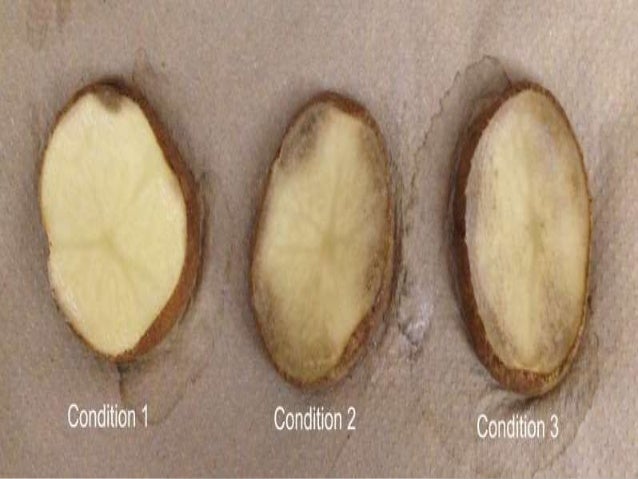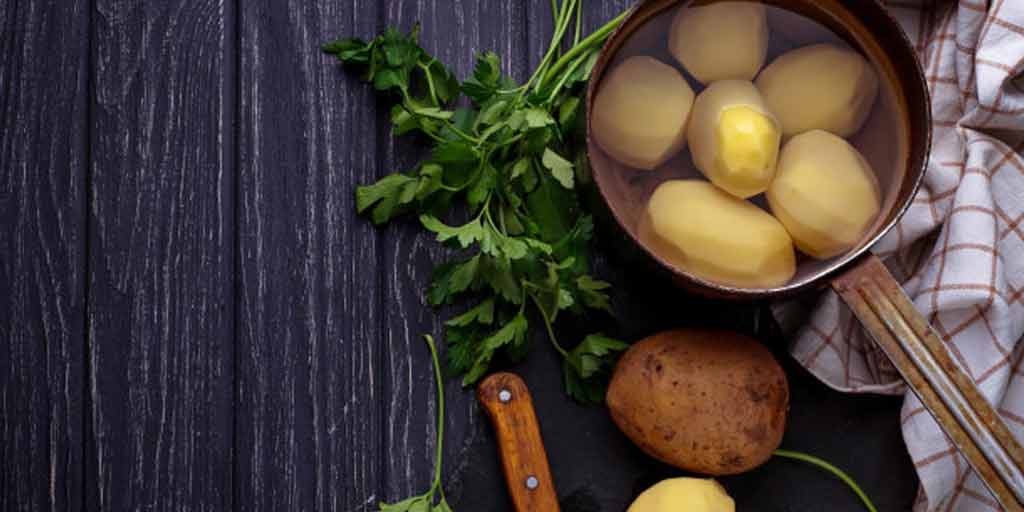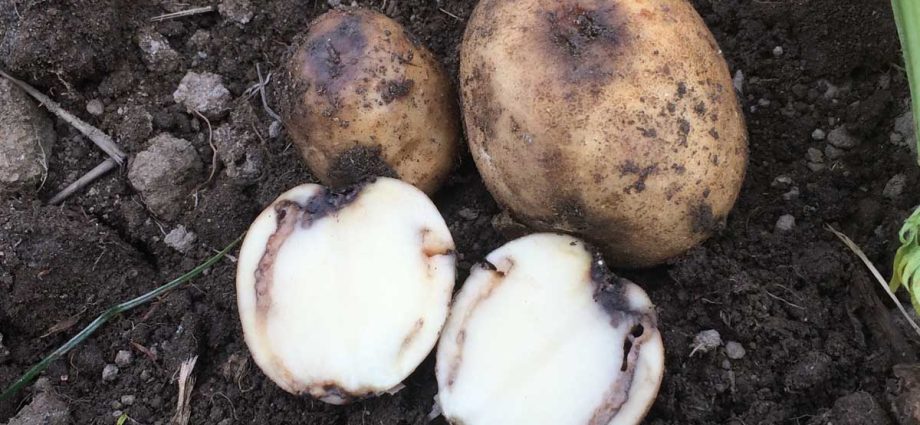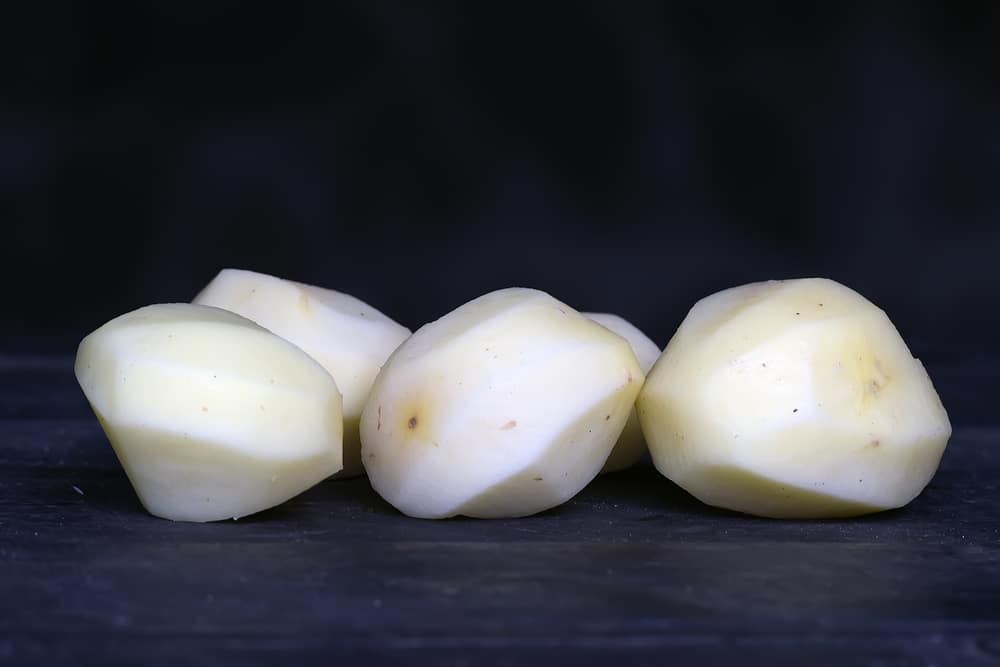What’s Behind the Darkening of Potatoes?
Potatoes turning black is a common issue many people face, whether it’s during storage, cooking, or even after peeling. But have you ever wondered why this happens? Understanding the reasons behind potato discoloration can help prevent it and ensure food safety. The phenomenon of potatoes turning black is not just a cosmetic issue, but it can also affect the nutritional value and edibility of the potato. So, why does potato turn black? It’s essential to delve into the science behind this process to appreciate the complexity of the humble potato.
One of the primary reasons potatoes turn black is due to enzymatic browning, a natural process that occurs when potatoes are cut or bruised. This process triggers the release of enzymes that react with oxygen, leading to the formation of melanin, a pigment responsible for the black color. However, enzymatic browning is not the only factor contributing to potato discoloration. Other factors, such as high temperatures, physical damage, and certain chemicals, can also trigger this process.
Despite the unsightly appearance of black potatoes, they are still safe to eat. In fact, the black color can be a sign of increased antioxidant activity, which can have potential health benefits. However, it’s crucial to note that not all black potatoes are created equal. If the potato has turned black due to rot or decay, it’s best to err on the side of caution and discard it.
To prevent potatoes from turning black, it’s essential to store them properly. Keep potatoes away from light, heat, and oxygen, and store them in a cool, dark place. When cooking potatoes, use gentle heat and avoid overcooking, as this can trigger enzymatic browning. By understanding the science behind potato discoloration, you can take steps to prevent it and enjoy your potatoes at their best.
The Role of Enzymatic Browning in Potato Discoloration
Enzymatic browning is a natural process that occurs when potatoes are cut or bruised, leading to the formation of melanin, a pigment responsible for the black color. This process is triggered by the release of enzymes, such as polyphenol oxidase (PPO), which react with oxygen and other compounds in the potato. The resulting melanin is responsible for the black color, which can range from a light brown to a deep black.
The enzymatic browning reaction is a complex process that involves the interaction of multiple enzymes, substrates, and cofactors. When potatoes are cut or bruised, the cell walls are damaged, releasing the enzymes and substrates into the surrounding tissue. The PPO enzyme then reacts with the oxygen in the air, leading to the formation of melanin. This process can be influenced by various factors, such as temperature, pH, and the presence of other compounds.
Understanding the role of enzymatic browning in potato discoloration is crucial for preventing it. By controlling the factors that influence this process, such as temperature, pH, and oxygen levels, it is possible to slow down or prevent the formation of melanin. For example, storing potatoes in a cool, dark place can help to slow down the enzymatic browning reaction, while cooking potatoes in a way that minimizes oxygen exposure can also help to prevent discoloration.
Enzymatic browning is not the only factor contributing to potato discoloration, but it is a significant one. By understanding the science behind this process, it is possible to develop strategies for preventing or minimizing discoloration, which can help to improve the quality and appearance of potatoes.
How to Prevent Potatoes from Turning Black: Tips and Tricks
Preventing potatoes from turning black requires a combination of proper storage, handling, and cooking techniques. One of the most effective ways to prevent discoloration is to keep potatoes away from light, heat, and oxygen. This can be achieved by storing potatoes in a cool, dark place, such as a pantry or cupboard. It’s also essential to handle potatoes gently to avoid bruising or damaging the skin, which can trigger enzymatic browning.
Cooking potatoes can also contribute to discoloration, especially if they are overcooked or exposed to high temperatures. To prevent this, cook potatoes at a moderate temperature, and avoid overcooking them. Additionally, using acidic ingredients, such as lemon juice or vinegar, can help to slow down the enzymatic browning reaction.
Another effective way to prevent potatoes from turning black is to use a technique called “blanching.” Blanching involves briefly submerging the potatoes in boiling water, then immediately plunging them into an ice bath to stop the cooking process. This helps to inactivate the enzymes that cause browning, resulting in a whiter, more appealing potato.
In addition to these techniques, there are several other ways to prevent potatoes from turning black. For example, using a potato variety that is naturally resistant to browning, such as the “Russet” or “Idaho” potato, can help to minimize discoloration. Additionally, using a food-grade antioxidant, such as ascorbic acid, can help to slow down the enzymatic browning reaction.
By following these tips and tricks, you can help to prevent potatoes from turning black and keep them looking their best. Whether you’re a home cook or a professional chef, understanding how to prevent potato discoloration can help you to create more appealing and appetizing dishes.
The Impact of Oxygen on Potato Discoloration
Oxygen plays a significant role in potato discoloration, particularly in the formation of melanin. When potatoes are cut or bruised, the cells are damaged, releasing enzymes that react with oxygen in the air. This reaction leads to the formation of melanin, causing the potato to turn black. The amount of oxygen present can affect the rate and extent of discoloration, with higher oxygen levels leading to faster and more pronounced browning.
During storage, potatoes are often exposed to varying levels of oxygen. For example, potatoes stored in a bag or container with limited airflow may experience reduced oxygen levels, slowing down the browning process. On the other hand, potatoes stored in a well-ventilated area or exposed to high oxygen levels may discolor more quickly.
Cooking potatoes can also affect the impact of oxygen on discoloration. When potatoes are cooked, the heat can break down the cell walls, releasing enzymes that react with oxygen. This can lead to a faster browning reaction, especially if the potatoes are cooked at high temperatures or for extended periods.
Understanding the impact of oxygen on potato discoloration can help to develop strategies for preventing or minimizing browning. For example, storing potatoes in a low-oxygen environment or using techniques that reduce oxygen exposure, such as vacuum-sealing or modified atmosphere packaging, can help to slow down the browning process.
In addition to oxygen, other factors such as temperature, humidity, and light can also affect potato discoloration. By controlling these factors, it is possible to minimize browning and maintain the quality and appearance of potatoes.
Other Factors Contributing to Potato Discoloration
In addition to enzymatic browning and oxygen, several other factors can contribute to potato discoloration. High temperatures, for example, can trigger enzymatic browning and lead to a faster browning reaction. This is why potatoes that are cooked at high temperatures or exposed to heat for extended periods may turn black more quickly.
Physical damage, such as bruising or cutting, can also cause potatoes to turn black. When potatoes are damaged, the cells are broken, releasing enzymes that react with oxygen and lead to the formation of melanin. This is why it’s essential to handle potatoes gently and avoid damaging them during storage or cooking.
Certain chemicals, such as sulfites or ascorbic acid, can also affect potato discoloration. These chemicals can either promote or inhibit enzymatic browning, depending on the specific conditions. For example, sulfites can help to prevent browning by inhibiting the activity of polyphenol oxidase, an enzyme involved in the browning reaction.
Other factors, such as pH levels, water content, and the presence of certain minerals, can also influence potato discoloration. For example, potatoes with high water content may be more prone to browning, while those with low water content may be less susceptible.
Understanding the various factors that contribute to potato discoloration can help to develop strategies for preventing or minimizing browning. By controlling these factors, it is possible to maintain the quality and appearance of potatoes and ensure they remain safe to eat.
Debunking Common Myths About Black Potatoes
Despite the common occurrence of black potatoes, many people believe that they are toxic or spoiled. However, this is not necessarily the case. In fact, black potatoes can still be safe to eat and may even have some unique nutritional benefits.
One common myth about black potatoes is that they are toxic due to the presence of a compound called solanine. While it is true that solanine can be toxic in high amounts, the levels found in black potatoes are typically not high enough to cause harm. In fact, solanine is a natural compound that is present in many types of potatoes, and it can even have some beneficial effects, such as acting as an antioxidant.
Another myth about black potatoes is that they are spoiled or rotten. However, this is not necessarily the case. Black potatoes can still be firm and fresh, even if they have turned black. In fact, the black color can be a sign of increased antioxidant activity, which can have beneficial effects on human health.
It’s also worth noting that black potatoes can be a sign of a natural process called “enzymatic browning.” This process occurs when the potato is cut or bruised, and it can lead to the formation of melanin, which is responsible for the black color. While this process can affect the appearance of the potato, it does not necessarily affect its safety or nutritional value.
In conclusion, black potatoes are not necessarily toxic or spoiled. In fact, they can still be safe to eat and may even have some unique nutritional benefits. By understanding the science behind potato discoloration, we can debunk common myths and appreciate the complexity and beauty of the humble potato.
Using Black Potatoes in Cooking: Creative Ideas
Black potatoes can be a unique and flavorful addition to a variety of dishes. One creative way to use black potatoes is to make a black potato salad. Simply boil or steam the potatoes until they are tender, then chill them in the refrigerator. Once chilled, dice the potatoes and combine them with your favorite salad ingredients, such as mayonnaise, mustard, and diced vegetables.
Another creative way to use black potatoes is to make black potato pancakes. Simply grate the potatoes and combine them with flour, egg, and seasonings. Form the mixture into patties and fry them in a pan until they are crispy and golden brown.
Black potatoes can also be used to make a delicious black potato soup. Simply boil or steam the potatoes until they are tender, then puree them with your favorite soup ingredients, such as onions, garlic, and chicken or vegetable broth.
In addition to these ideas, black potatoes can be used in a variety of other dishes, such as black potato gnocchi, black potato gratin, and black potato croquettes. The key is to think creatively and experiment with different recipes and ingredients to find the perfect way to use black potatoes in your cooking.
One of the benefits of using black potatoes is that they can add a unique and interesting flavor to dishes. The black color of the potatoes can also add a dramatic touch to presentations, making them perfect for special occasions or dinner parties.
Overall, black potatoes are a versatile and flavorful ingredient that can be used in a variety of creative ways. By experimenting with different recipes and ingredients, you can find the perfect way to use black potatoes in your cooking and add a unique touch to your dishes.
Conclusion: The Science and Significance of Black Potatoes
In conclusion, the phenomenon of potatoes turning black is a complex issue that involves a combination of factors, including enzymatic browning, oxygen, temperature, and physical damage. By understanding the science behind potato discoloration, we can better appreciate the complexity and beauty of the humble potato.
Throughout this article, we have explored the various factors that contribute to potato discoloration, including enzymatic browning, oxygen, and physical damage. We have also discussed the importance of proper storage, handling, and cooking techniques in preventing potatoes from turning black.
In addition to the practical applications of understanding potato discoloration, we have also explored the culinary potential of black potatoes. By showcasing creative recipe ideas and highlighting the unique appearance and flavor of black potatoes, we have demonstrated that black potatoes can be a valuable and delicious ingredient in a variety of dishes.
Ultimately, the science behind potato discoloration is a fascinating and complex topic that offers insights into the biology and chemistry of the potato. By understanding the factors that contribute to potato discoloration, we can better appreciate the beauty and complexity of the natural world.
As we conclude this article, we encourage readers to appreciate the complexity and beauty of the humble potato. Whether you are a scientist, a chef, or simply a curious individual, we hope that this article has provided you with a deeper understanding of the science behind potato discoloration and the culinary potential of black potatoes.








